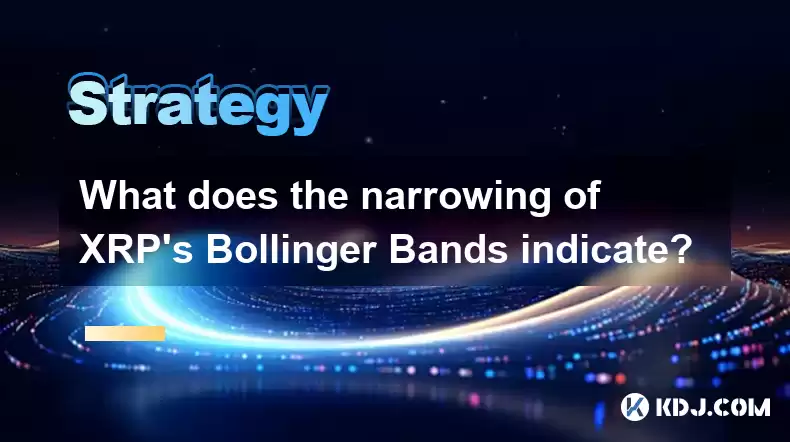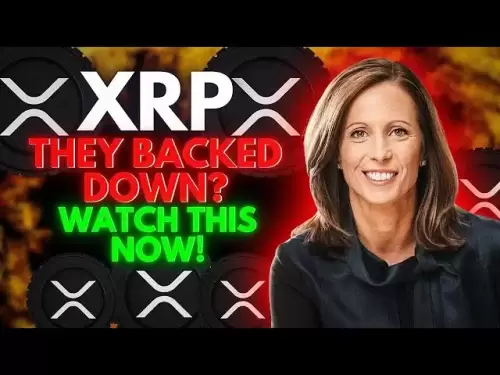-
 Bitcoin
Bitcoin $117500
2.15% -
 Ethereum
Ethereum $3911
6.19% -
 XRP
XRP $3.316
10.79% -
 Tether USDt
Tether USDt $1.000
0.01% -
 BNB
BNB $787.2
2.24% -
 Solana
Solana $175.2
4.15% -
 USDC
USDC $0.9999
0.00% -
 Dogecoin
Dogecoin $0.2225
8.40% -
 TRON
TRON $0.3383
0.28% -
 Cardano
Cardano $0.7868
6.02% -
 Stellar
Stellar $0.4382
9.34% -
 Hyperliquid
Hyperliquid $40.92
7.56% -
 Sui
Sui $3.764
7.63% -
 Chainlink
Chainlink $18.48
10.66% -
 Bitcoin Cash
Bitcoin Cash $582.1
1.88% -
 Hedera
Hedera $0.2601
6.30% -
 Avalanche
Avalanche $23.33
4.94% -
 Ethena USDe
Ethena USDe $1.001
0.02% -
 Litecoin
Litecoin $122.3
2.04% -
 UNUS SED LEO
UNUS SED LEO $8.969
-0.27% -
 Toncoin
Toncoin $3.339
0.86% -
 Shiba Inu
Shiba Inu $0.00001287
4.30% -
 Uniswap
Uniswap $10.43
7.38% -
 Polkadot
Polkadot $3.861
5.08% -
 Dai
Dai $1.000
0.02% -
 Bitget Token
Bitget Token $4.513
3.41% -
 Monero
Monero $267.7
-6.18% -
 Cronos
Cronos $0.1499
4.14% -
 Pepe
Pepe $0.00001110
5.15% -
 Aave
Aave $284.9
8.28%
What does the narrowing of XRP's Bollinger Bands indicate?
Narrowing of XRP's Bollinger Bands signals decreased volatility and potential breakout, often used by traders to anticipate significant price movements.
Apr 19, 2025 at 02:00 pm

What does the narrowing of XRP's Bollinger Bands indicate?
The Bollinger Bands are a technical analysis tool used by traders to gauge the volatility and potential price movements of an asset, including cryptocurrencies like XRP. The narrowing of XRP's Bollinger Bands can provide valuable insights into the market's behavior. This article will delve into what the narrowing of XRP's Bollinger Bands indicates, how to interpret these signals, and how traders might use this information to make informed decisions.
Understanding Bollinger Bands
Bollinger Bands consist of three lines: the middle band, which is typically a simple moving average (SMA), and two outer bands that are standard deviations away from the middle band. The standard setting for Bollinger Bands is a 20-day SMA for the middle band, with the upper and lower bands set at two standard deviations away from the SMA.
When the Bollinger Bands narrow, it means that the volatility of XRP's price is decreasing. This narrowing is often referred to as a squeeze, which can signal a period of consolidation or low volatility. The squeeze indicates that the market is in a state of equilibrium, with the price of XRP trading within a tight range.
What Does a Narrowing of Bollinger Bands Indicate for XRP?
The narrowing of XRP's Bollinger Bands can indicate several things:
Decreased Volatility: As mentioned, a narrowing of the bands suggests that the price of XRP is experiencing less volatility. This can be a sign that the market is taking a breather after a period of significant price movement.
Potential Breakout: A common interpretation of a Bollinger Band squeeze is that it often precedes a significant price movement. When the bands are very narrow, it suggests that the market is coiled and ready to spring into action. This could mean a potential breakout to the upside or downside.
Market Consolidation: The narrowing can also indicate that XRP is in a consolidation phase, where the price is trading sideways as the market digests recent movements. This can be a period of indecision among traders, with neither bulls nor bears having a clear advantage.
How to Interpret the Narrowing of Bollinger Bands
Interpreting the narrowing of XRP's Bollinger Bands involves looking at other technical indicators and market conditions to confirm potential signals. Here are some steps traders might take:
Confirm with Other Indicators: Use other technical indicators like the Relative Strength Index (RSI) or Moving Average Convergence Divergence (MACD) to confirm the potential for a breakout. If these indicators also suggest a strong move, it can increase the confidence in the signal from the Bollinger Bands.
Volume Analysis: Look at the trading volume during the squeeze. An increase in volume during a narrow band period could indicate that a significant move is imminent.
Historical Data: Review historical data to see how XRP has reacted to similar Bollinger Band squeezes in the past. This can provide insights into potential future movements.
Trading Strategies Based on Bollinger Band Squeezes
Traders often use the narrowing of Bollinger Bands to develop trading strategies. Here are some common approaches:
Breakout Trading: When the Bollinger Bands are very narrow, traders might prepare for a breakout. They can set buy orders above the upper band and sell orders below the lower band, anticipating a significant move in either direction.
Straddle Strategy: Some traders might employ a straddle strategy, where they buy both call and put options on XRP. This strategy aims to profit from the expected volatility increase following a squeeze, regardless of the direction of the price movement.
Wait for Confirmation: Instead of acting immediately on the squeeze, some traders prefer to wait for the price to break out of the bands and then confirm the direction of the move. This approach can help avoid false breakouts.
Practical Example of Trading XRP Based on Bollinger Band Squeezes
To illustrate how traders might use the narrowing of Bollinger Bands, let's consider a practical example:
Identify the Squeeze: First, observe that XRP's Bollinger Bands are narrowing significantly, indicating a squeeze.
Set Up for a Breakout:
- Place a buy order slightly above the upper Bollinger Band.
- Place a sell order slightly below the lower Bollinger Band.
Monitor Volume and Other Indicators: Keep an eye on trading volume and other technical indicators like RSI or MACD to confirm the potential for a breakout.
Execute the Trade: Once the price breaks out of the bands, execute the trade in the direction of the breakout. For instance, if the price breaks above the upper band, execute the buy order.
Set Stop-Loss and Take-Profit Levels: To manage risk, set stop-loss orders below the breakout level and take-profit orders at a reasonable target based on the volatility of XRP.
Risks and Considerations
While the narrowing of Bollinger Bands can be a powerful signal, it is not foolproof. Traders should be aware of the following risks and considerations:
False Breakouts: Sometimes, the price may break out of the bands but quickly revert back, leading to false signals. It's crucial to use other indicators to confirm the breakout.
Market Conditions: The effectiveness of Bollinger Bands can vary depending on overall market conditions. During periods of high volatility or significant news events, the bands may not provide reliable signals.
Over-reliance on Technical Analysis: While technical analysis tools like Bollinger Bands are useful, they should not be the sole basis for trading decisions. Fundamental analysis and market sentiment should also be considered.
Frequently Asked Questions
Q: Can Bollinger Bands be used for long-term trading of XRP?
A: Bollinger Bands are primarily used for short-term trading and technical analysis. While they can be adjusted for longer periods, they are most effective for identifying short-term volatility and potential breakouts. For long-term trading of XRP, it's better to combine Bollinger Bands with other long-term indicators and fundamental analysis.
Q: How do I adjust the settings of Bollinger Bands for XRP?
A: To adjust the settings of Bollinger Bands for XRP, you can modify the period of the moving average and the number of standard deviations used for the bands. The standard settings are a 20-day SMA with two standard deviations. You might experiment with different settings to find what works best for XRP's price movements.
Q: Are there any other technical indicators that work well with Bollinger Bands for XRP?
A: Yes, several technical indicators can complement Bollinger Bands when trading XRP. The Relative Strength Index (RSI) can help identify overbought or oversold conditions, while the Moving Average Convergence Divergence (MACD) can confirm potential breakouts. Additionally, the Average True Range (ATR) can provide insights into XRP's volatility.
Q: How can I avoid false signals when using Bollinger Bands for XRP?
A: To avoid false signals, use Bollinger Bands in conjunction with other technical indicators like RSI, MACD, and volume analysis. Additionally, wait for confirmation of a breakout before entering a trade, and always set stop-loss orders to manage risk.
Disclaimer:info@kdj.com
The information provided is not trading advice. kdj.com does not assume any responsibility for any investments made based on the information provided in this article. Cryptocurrencies are highly volatile and it is highly recommended that you invest with caution after thorough research!
If you believe that the content used on this website infringes your copyright, please contact us immediately (info@kdj.com) and we will delete it promptly.
- Stablecoins, Hong Kong, and On-Chain Finance: Navigating the Regulatory Maze
- 2025-08-08 12:30:12
- Tron's Sell-Off Spurs Altcoin Shift: What's Next for TRX?
- 2025-08-08 08:30:12
- Euler, DeFi, and Coinbase: A New York Minute on the Latest Buzz
- 2025-08-08 12:30:12
- RUVI Presale: Is the Growth Potential Real?
- 2025-08-08 09:10:12
- Sleep Token's US Takeover: Thornhill Rides the 'Even In Arcadia' Wave
- 2025-08-08 08:30:12
- FTT Token's Wild Ride: Creditor Repayments vs. Market Drop - A New Yorker's Take
- 2025-08-08 07:10:12
Related knowledge

How to read cryptocurrency charts and use technical analysis?
Aug 08,2025 at 11:08am
Understanding the Basics of Cryptocurrency ChartsCryptocurrency charts are graphical representations of price movements over time. These charts are es...

How to avoid common crypto investment mistakes?
Jul 13,2025 at 01:35am
Understanding the Risks of Crypto InvestmentInvesting in cryptocurrency can be highly rewarding, but it also comes with significant risks. One of the ...

What is a long-short crypto strategy?
Jul 15,2025 at 10:56am
Understanding the Basics of a Long-Short Crypto StrategyA long-short crypto strategy is an investment approach where traders simultaneously take long ...

What is a long-short crypto strategy?
Jul 11,2025 at 01:28pm
Understanding the Basics of Long-Short Crypto StrategyA long-short crypto strategy is an investment approach where traders take both long and short po...

How to use the RSI indicator for crypto?
Jul 12,2025 at 03:56pm
Understanding the RSI Indicator in Cryptocurrency TradingThe Relative Strength Index (RSI) is a momentum oscillator used to measure the speed and chan...

Is copy trading a good strategy for crypto beginners?
Jul 12,2025 at 08:28am
Understanding Copy Trading in the Cryptocurrency MarketCopy trading is a strategy where novice traders replicate the trades of experienced investors a...

How to read cryptocurrency charts and use technical analysis?
Aug 08,2025 at 11:08am
Understanding the Basics of Cryptocurrency ChartsCryptocurrency charts are graphical representations of price movements over time. These charts are es...

How to avoid common crypto investment mistakes?
Jul 13,2025 at 01:35am
Understanding the Risks of Crypto InvestmentInvesting in cryptocurrency can be highly rewarding, but it also comes with significant risks. One of the ...

What is a long-short crypto strategy?
Jul 15,2025 at 10:56am
Understanding the Basics of a Long-Short Crypto StrategyA long-short crypto strategy is an investment approach where traders simultaneously take long ...

What is a long-short crypto strategy?
Jul 11,2025 at 01:28pm
Understanding the Basics of Long-Short Crypto StrategyA long-short crypto strategy is an investment approach where traders take both long and short po...

How to use the RSI indicator for crypto?
Jul 12,2025 at 03:56pm
Understanding the RSI Indicator in Cryptocurrency TradingThe Relative Strength Index (RSI) is a momentum oscillator used to measure the speed and chan...

Is copy trading a good strategy for crypto beginners?
Jul 12,2025 at 08:28am
Understanding Copy Trading in the Cryptocurrency MarketCopy trading is a strategy where novice traders replicate the trades of experienced investors a...
See all articles

























































































